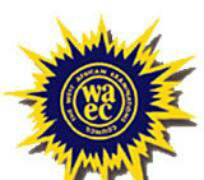WWW.SOLUTIONFANS.COM - MASTER OF ALL EXAM RUNS
Dear will you write 2019 Jamb/Waec? Click here to submit your phone number for important updates
================================
Economic-Obj
1BADCCDAADA
11CABBBBABAC
21CACACDBDCA
31ACCAADADCC
41DBAADCCDBC
Good luck

ECONOMIC THEORY ANSWERS
1a)
Fixed cost : &
Processing machine :2000
Factory rent : 1200
=3,200
Variable cost :
Manager salary: 1500
Wages: 2500
Fuel: 600
Raw material: 1400
Electricity bill: 800
=6,800
Average cost=total/output=10000/3000 =3.3
1b)
Total cost=10000
Total revenue= 3000*6=18000
Profit=18000-1000=8000
1c)
10/100*8000/1=800
1d)
Fixed cost is the amount spent that does not vary as output change while variable cost changes as output changes
===================================
Section (B) Answer 3 Only
===================================
7a)
i)National income: is an uncertain term which is used interchangeably with national dividend, national output and national expenditure. On this basis, national income has been defined in a number of ways
ii)Personal Income: personal income refers to an individual’s total earnings from wages, investment enterprises, and other ventures. It is the sum of all the incomes received by all the individuals or household during a given period.
iii)Disposable Income: is total personal income minus personal current taxes. In national accounts definitions, personal income minus personal current taxes equals disposable personal income
iv)Real Income: refers to the income of an individual or group after taking into consideration the effects of inflation on purchasing power. For example, if you receive a 2% salary increase over the previous year and inflation for the year is 1%, then your real income only increases by 1%.
7b)
i)Inventory Adjustments:
Inventory adjustments i.e., changes in the stock of capital goods or final products are also to be taken into account while computing national income
ii)Problem of Imputed Values:
There are certain goods and services which do not appear in or cannot be brought to the market. In such cases we have to impute values to them.
iii)Excluded Market Transactions: Many transactions are such that represent merely the transfer of wealth (or claims to wealth) or the exchange of commodities produced in some previous accounting period.
iv)Problems of Double Counting: Double counting implies the possibility of a commodity like raw material or labour being included in national income more than once,
===================================
4a)
Trade by barter can be defined as the exchange of goods for goods and services for services.
4b)
i) Problem of double coincidence: This is a situation whereby a producer looks for another producer who has what he wants and want what he has.
ii) Problem of storage: This problem occur because most of goods produced are perishable.
4c)
i)Commodity Money: Is a commodity that is generally acceptable as a medium of exchange. Such a commodity has a money value as well as an intrinsic value of its own.
ii) Token money: This is a form of money with a face value which is greater than the value of the metal content.
iii) Bank deposits: The bank deposit is the process whereby an individual deposits his money in the bank and then uses cheques as a means of payment.
===================================
3a)
Primary production involves the extractive industry where the occupation of people is directed to the process of extracting raw materials from the soil or area
3bi)
Primary production:-
Example:-Mining and Fishing
3bii)
Secondary production:-
Example:-Manufacturing industries and construction industries
3biii)
Tertiary production:-
Example:-Insurance and Banking
3c)
i) Revenue: The primary industries like timber industry, cocoa industry, fishing industry, mining industry etc pay monies to the government in the form of taxes or levies. These monies are called revenues and they are used for developmental projects in the country.
ii) Foreign exchange: Most of the the primary industries in such as timber industry, cocoa industry, mining industry etc., do not process or add value to their raw materials. Their raw materials are exported to other countries and this earns the country foreign exchange.
iii) Employment: The primary industries together employ over 65% of the working population in a country. These various industries serve as employment and help people to earn income to improve their lives.
Majority of the people at the rural areas are farmers and fishermen.
iv) Raw materials: Some of the industries process or add value to the raw materials from the primary industries.
For example, cocoa beans obtained from the Cocoa industries are processed by some companies such as Cocoa Processing Company into chocolates etc.
===================================
6a)
Unemployment can be defined as an economic situation in which able body men and women who are willing and able to work can not secure any job in the country.
6b)
i) Technological employment: This is caused as a result of company changes its technical ways of production which result in laying off of worker who cannot cope with the new method of production.
ii) Cyclical Unemployment: This is caused as a result I down-swing in trade cycle ie a fall in a demand for a country’s product.
6c)
i) Industrialization: Government should many industries that can employ many worker.
ii) Population control – Population should be controlled to obtain optimum level, so as to match the human population with available resources.
iii) Proper Development plan: This should be put in places to cater for people who are unemployed.
iv) Re-designing Educational system : The educational system should be redesigned to graduate people that are able to create employment.
===================================
Completed
========≠==========================
also don't forget to leave a Reply, we would very MUCH appreciate Your Comments On This Post Below. Thanks!

